
When I received my Sennheiser HD280 Pro headphones back in June of 2008 and started to listen to them, I was immediately impressed with the overall sound signature. These were my first “good” headphones and easily blew everything else I’d ever owned out of the water.
But…something was missing. Something I deem very important to my listening experience. That something was bass. Considering I listen to a great deal of Hip-Hop music, this was admittedly a very glaring omission from the Sennheiser HD280 Pros. Everything else about these headphones was great to my ears but without a well pronounced low end, the sound signature was lacking. I was able to boost the bass artificially by using a number of bass boosting EQ settings in many of my music playing devices. While this technique worked in the short term, I began turning to other sources to get my bass fix, such as my Bass-Freq earbuds, which, as I’ve already reported, were lacking in other areas and couldn’t compare to the overall sound quality of the Sennheisers.
Recently, while doing some research, I came across the Blu-Tack mod which was apparently an easy way to add some body to the HD280 Pro’s bass. I found a couple of tutorials on how to do it which involves opening the ear cups of the headphones and spreading the tack about liberally. Since I already have experience opening the headphones to replace a broken cable (don’t ask), opening them up again was a pretty easy task. So, I bought some Blu-Tack from Amazon and got to work when it arrived.
The mod itself is incredibly simple to perform and is easily reversed if the end result is a bit too heavy on the bass for your liking and I’m going to show you how it’s done below.
Tutorial
The first thing you’ll need to do is remove the ear cushions from the ear cups, which is easily done by pulling the edges of the cushions themselves away from the earcups. They should loosen and come right off with relative ease.
Second, you’ll need to unscrew two screws on the earcups themselves using a small screwdriver as you’ll see below.
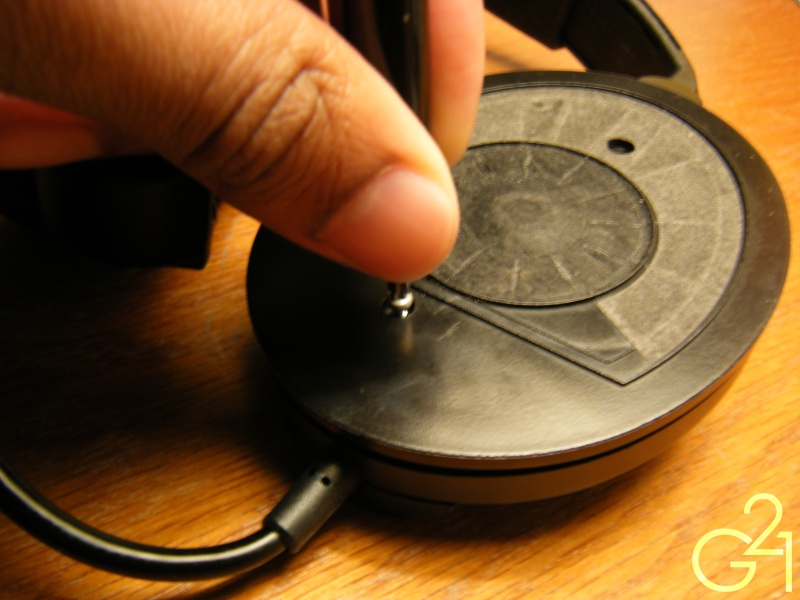
Now, just remove the earcup and you’ll see this (in the case of the left earcup where the cable connects to the headphones).
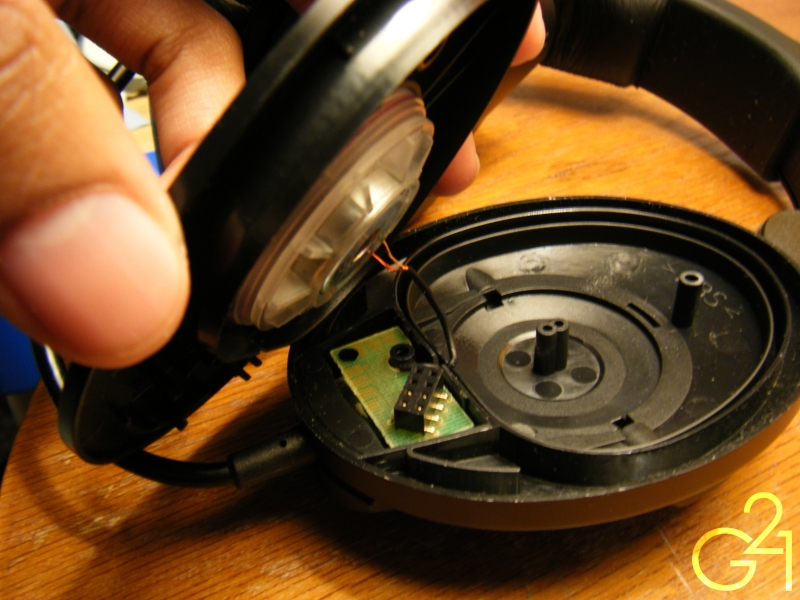
Be careful when you’re removing the earcup though! There are some very thin wires connecting the driver to its housing which can be easily broken if you pull the covering off too fast.
Now that you’ve got the covering off, it’s time to prepare your Blu-Tack (if you haven’t already).
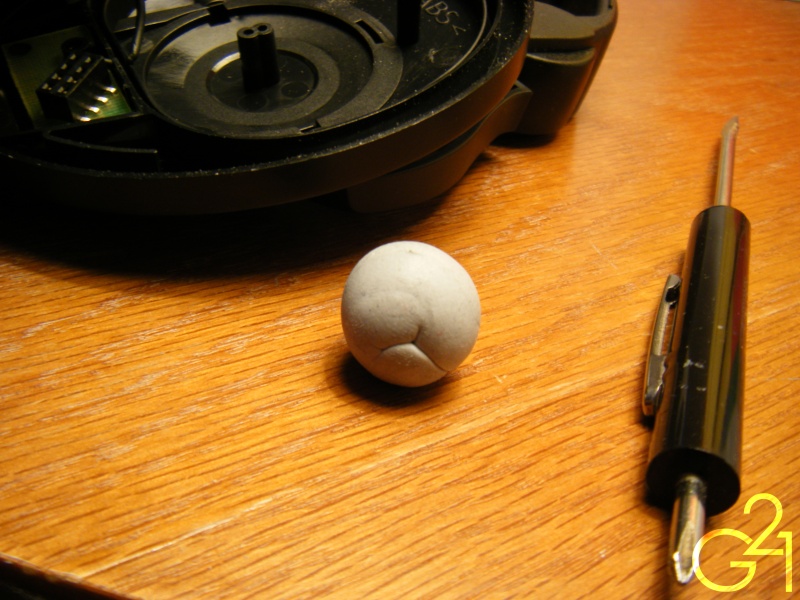
I used about 75 g in total, so about 35 g per side, give or take. How much tack you use here is entirely up to you. The more tack you use, the more bass you get so that’s a judgment call you’ll have to make in regards to your personal preference.
Once you’ve decided on how much you’d like to use, you’ll want to roll it into a ball as I did above and then breaking it into a few pieces and spread it throughout the earcup until it’s completely covered, like you’ll see below.
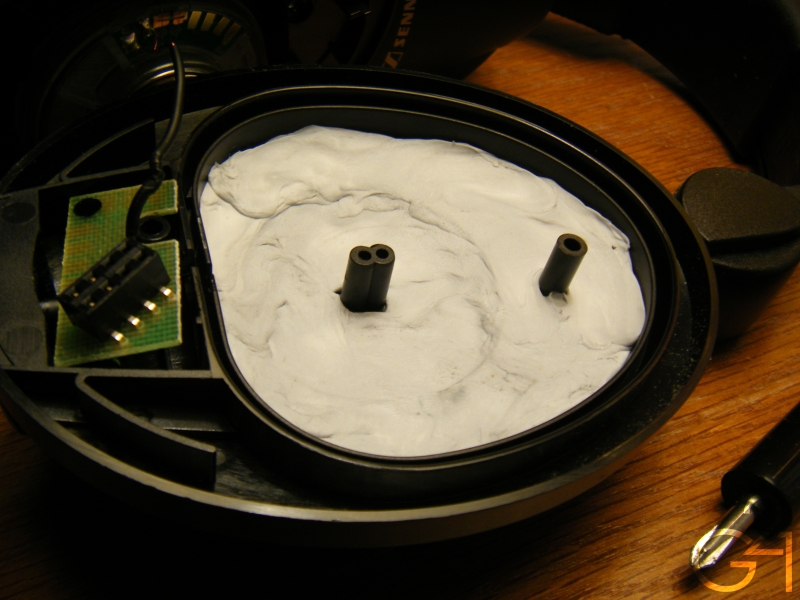
Here’s another picture just for the heck of it.
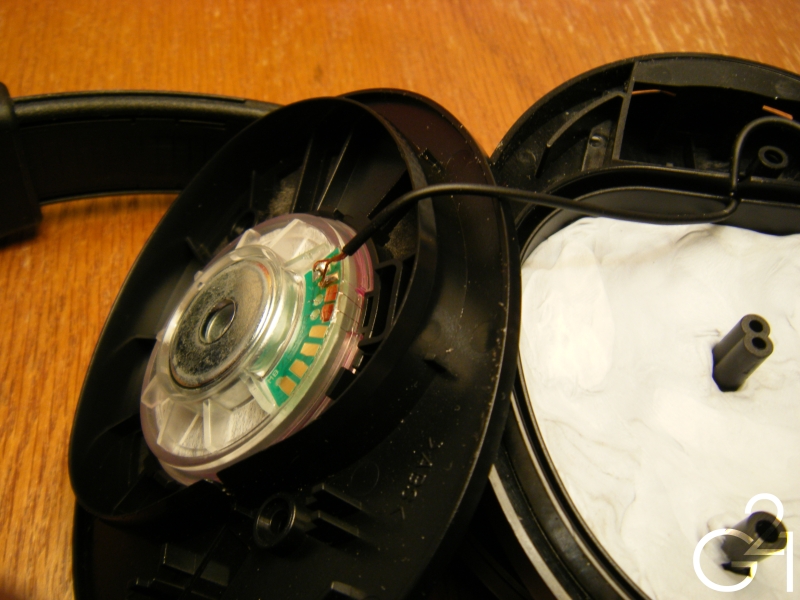
Now just put everything back together and repeat for the second earcup and you’re done! Now is the time to listen to your HD280 Pros and decide if you like the end result of this mod. Like I said above, the mod is easily reversible if you don’t like the increased punchiness and easily augmented to adjust the bass response to your liking.
Results
With the tack mod, the bass gets that extra kick it needs to really shine and adds a significant amount of body and warmth to the sound. I wouldn’t say this is a night and day difference but the bass is considerably punchier to my ears without sacrificing mid and high end clarity. I’d definitely say this is an improvement over the stock design purely because, well, I like my bass and any improvement therein is definitely a plus in my book.
All said and done, I’m glad I did this mod. This is a very quick, cheap and easy way to improve the performance of my old standbys and for HD280 Pro owners, this is a no-brainer for those of you out there who seek stronger low end response from your headphones.
 The Mind of Game
The Mind of Game